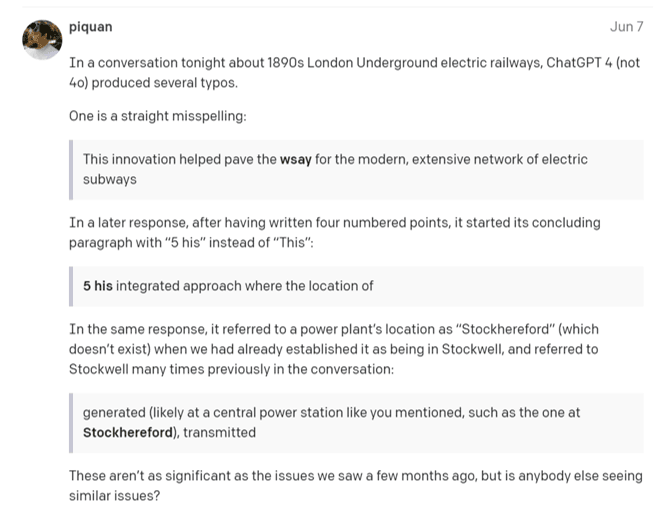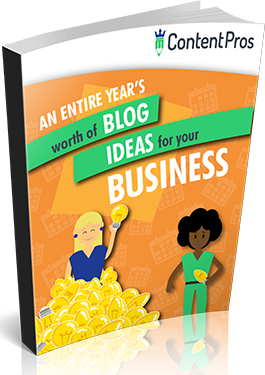It’s no secret there are pros and cons to AI-generated content. Ultimately, it depends on what you’re creating and how you’re using it. Specifically for written content, AI can do more harm than good if you’re not careful.
Using AI isn’t the flex it used to be. Nowadays, 44% of marketers say they’re using AI in some way to generate content, while nearly 63% say they plan to use AI tools. It’s not a “trendy” technology anymore; rather, it’s becoming an established piece of the content creation process for many businesses.
However, many companies have quickly learned that AI content generation tools like ChatGPT are hardly the panacea for content marketing they once believed. There’s a lot that AI simply can’t do, or at least do well.
Let’s compare the pros and cons of AI content generation and how you can avoid the most deadly sins killing your success.
What AI-Generated Content Gets Right
AI tools can prove useful in small, intentional doses, such as:
- Generating content outlines on a specific topic
- Translating content to another language
- Turning audio files into transcripts
- Captioning photos or videos
- Simplifying or summarizing text
- Writing social media headlines based on source content
We’ve seen each of these applications here at Content Pros, and while they don’t always save time compared to humans, they’re also hard to mess up. They’re very basic tasks that free up time for human writers to focus on longer content that requires more creativity and originality.
These examples use specific instructions and often involve source content. For example, you might give ChatGPT an article and ask it to pick out important phrases or sentences that you can use as social media posts. The more details you provide, the more likely you are to get decent outputs.
However, when it comes to writing new content, such as blog articles or web page copy, AI tools are hit or miss. Their greatest strength lies in inspiration, not creation. We’ll explore some examples in a moment.

©Gustavo Fring via Canva.com
7 Deadly Sins of Using Written AI Content
Yes, AI has the ability to create new content. But content for the sake of content isn’t going to get you the results you expect. Here’s why AI-generated content can do more harm than good:
1. A Lack of Originality
Generative AI is a language model, which means it uses logic to put words together to create complete ideas. However, it’s limited to the data it’s been trained on and ends up producing pattern-like text. The output lacks emotion, nuance, and originality compared to human writers.
As a result, your content sounds like everyone else who is using AI to talk about those same topics. There’s nothing unique about your content, which means there’s nothing to help you stand out. Most importantly, there’s nothing to make your brand memorable over another, which defeats some of the purpose of creating content.
2. Heavy Editing Required
When you get an article or web page copy from tools like ChatGPT, it’s not ready to publish as is. Even ChatGPT isn’t perfect when it comes to grammar and spelling. Remember, its output depends on the quality of the data it was trained on. It can leave out words, misspell words, and even make grammatical mistakes.

In addition, you might not be satisfied with its outputs. ChatGPT and other AI tools can be wordy, overly formal, and just plain boring to read. It might have the “bones” but no substance. This means you’ll need to flesh it out with your own ideas, and heavy editing can often take more time than writing original content from the start.
Last but not least, AI doesn’t always optimize articles for search engines. If you want an SEO blog post, you’ll need to go through several steps of optimization to help your content rank.
3. A Lack of Brand Voice
Ultimately, you’re writing for people first. AI doesn’t know the difference between human and robot readers. AI content sounds like a robot wrote it (because it did).
You can train AI tools to “learn” your brand voice so it sounds more like you. But it takes a ton of work to get there. And even then, it’s not perfect.
Your brand voice helps your content stand out. It gives your ideas flavor and substance beyond what’s been published before. Using AI puts your content into a sea of institutional sameness, which stifles your creative expression.
When your content sounds like everyone else’s content, there’s nothing unique about you. And there’s no reason to keep readers coming back. With companies using AI to produce more content at lightning speed, it will take more than just a larger quantity of words to get noticed online.
4. An Inability to Cite Sources
Most generative AI tools will mention specific sources, studies, or reports in the content but won’t include a link to them. This makes it harder and more time-consuming to fact-check any claims, plus you may not be able to find the original report.
AI can hallucinate sources, too. It might state the name of a report and who published it, but that doesn’t mean the report actually exists. As a test, we asked ChatGPT to create a list of 10 statistics about the ROI of content marketing using recent and reputable sources. Although it provided sources, 8 out of 10 were fabricated, and we were not able to find and validate all of the statistics. For example, for the first stat, ChatGPT confidently provided a link to a 2024 blog post, while the statistic was actually from a different 2017 article.

Sources are one way to build credibility in your blogs and other content. Without sources, anyone can make up any claim and call it truth. This is how the same tired old stats and data get passed around the internet with no real substance to support them.
When citing any type of fact or data, you should link to the original source if possible. AI can’t always be trusted to find the original source and may be pulling information from a competitor, an outdated site, or an unreputable source.
5. The Potential for Misinformation
Going back to data quality, generative AI tools aren’t great at fact-checking. They regurgitate content based on training data and patterns. We know we can’t trust everything we read online anyway, but humans can at least compare multiple sources to get a general idea of fact vs. fiction.
AI can get confused and give you false or misleading information. Tools like ChatGPT even come with a disclaimer:

If you pass misinformation on to your readers, you risk eroding their trust. Misinformation can have far-reaching impacts, negatively affecting people’s health, finances, and lives. Worse, AI continues to train itself on content, which can propagate misinformation even more.
6. Plagiarism Issues
Generative AI may use copyrighted work to generate its response, in some cases word for word. And even when it doesn’t steal content verbatim, it may still use concepts and ideas without giving credit to the original creators.
If you publish AI content, there’s a good chance you might be plagiarizing another creator without knowing it. It can be hard to detect, even with plagiarism checkers. Not knowing you’re using stolen work isn’t a good enough defense.
7. An Overdependence on AI-Generated Content
Writing is a skill, one that can decline when you don’t use it enough. Relying too heavily on AI-generated content can weaken your writing skills and rob you of opportunities to flex your creative muscles.
While AI might spark a new idea or help you fill the gaps when you have writer’s block, make sure to use it sparingly. The experiences, emotions, and ideas you bring to your writing are far more valuable than any sentence your AI tools can drum up.
How to Get the Most out of AI-Generated Content
Businesses using tools like ChatGPT need to weigh all the pros and cons of AI-generated content and understand how it affects the big picture. It’s not just a matter of convenience, but also quality, trust, and long-term impact. Human writers are still very much in demand because of the unique skills they bring to each piece of content that AI tools simply can’t compete with.
At Content Pros, we’re committed to maintaining a high level of quality across all of our content and copywriting, from blog articles and press releases to web pages, case studies, and more. We’ve embraced the opportunity to learn how to work with — not against — generative AI tools. We can apply them in ways that harness their best use cases while allowing our human writers to leverage their creativity and expertise.
We can take your AI-generated outlines and turn them into highly original, authoritative content. Or, allow our team to edit your AI-generated first drafts so your brand voice and originality can shine through. Contact us today to learn more.

